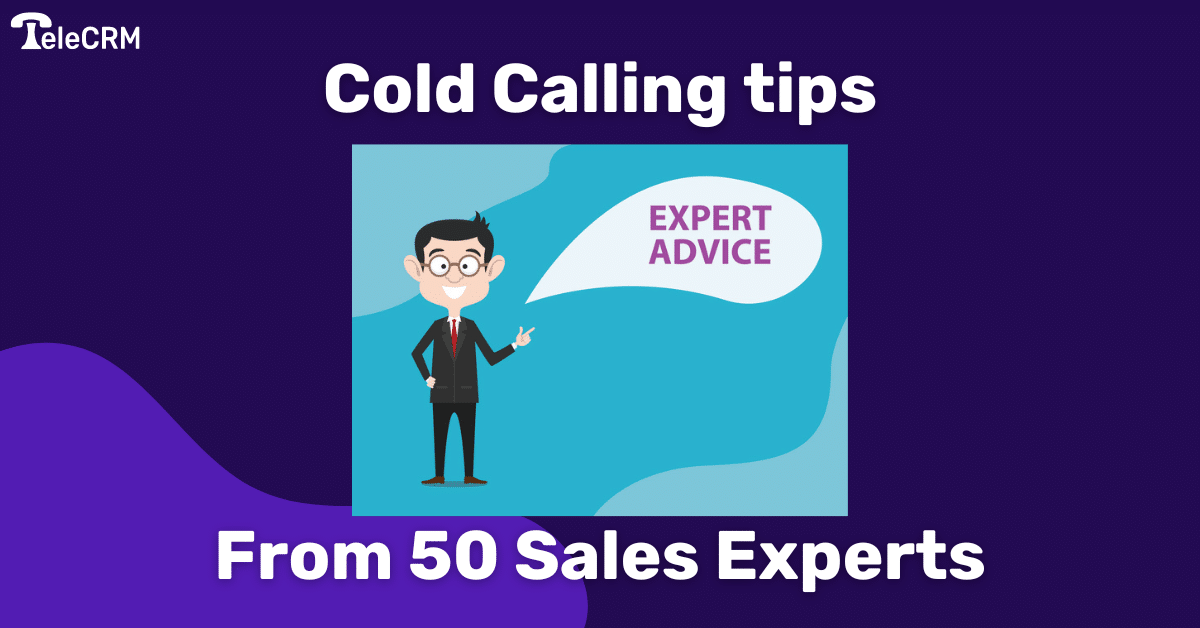Best CRM for cold calling? Finding the right Customer Relationship Management (CRM) system can dramatically improve your sales outreach. This guide delves into the key features, integrations, and strategies that make a CRM truly effective for cold calling, helping you choose the perfect platform to boost your conversion rates and streamline your workflow. We’ll explore various options, analyze their strengths and weaknesses, and provide actionable insights to maximize your ROI.
From contact management and call tracking to powerful integrations with email marketing and social media platforms, we’ll cover everything you need to know. We’ll also address crucial considerations like data security, pricing models, and how to measure the success of your cold calling campaigns using CRM data. Ultimately, this guide will empower you to make an informed decision and leverage the power of a CRM to transform your cold calling strategy.
Defining “Best” in Cold Calling CRM Software
Choosing the “best” cold calling CRM isn’t about finding a single perfect solution, but rather identifying the software that best aligns with your specific business needs and goals. The ideal CRM will streamline your sales process, improve team efficiency, and ultimately boost your conversion rates. Several key factors contribute to a high-performing CRM in this context.
Key Features of a High-Performing Cold Calling CRM
A truly effective cold calling CRM goes beyond basic contact management. Essential features include robust contact management with advanced search and filtering capabilities, integrated calling features (preferably with click-to-dial functionality and call recording), automation tools for tasks like email sequences and appointment scheduling, detailed reporting and analytics dashboards to track key performance indicators, and seamless integration with other essential business tools like email marketing platforms and calendar applications.
The software should also be user-friendly and intuitive, minimizing the learning curve for your team.
User Needs and Their Influence on CRM Selection
Different users within a sales team have different needs. Sales representatives might prioritize ease of use, call tracking, and lead management features. Sales managers, on the other hand, might focus on team performance monitoring, reporting dashboards, and features that facilitate sales forecasting. The size of the sales team also plays a crucial role; a small team might find a simple, affordable CRM sufficient, while a larger team would require a more scalable and feature-rich solution with advanced collaboration tools.
Finally, the industry and specific sales process significantly impact CRM choice; a real estate agent’s needs differ considerably from those of a SaaS company.
Metrics for Evaluating Cold Calling CRM Effectiveness
Several key metrics help evaluate the effectiveness of a cold calling CRM. These include call connection rates (percentage of calls successfully connected), conversation rates (percentage of connected calls resulting in a meaningful conversation), appointment setting rates (percentage of conversations resulting in scheduled meetings), conversion rates (percentage of appointments that lead to sales), average call duration, and cost per acquisition (CPA).
Analyzing these metrics over time reveals trends and allows for data-driven improvements in the sales process. For example, a consistently low call connection rate might indicate the need to refine lead generation strategies or improve call scripts.
CRM Pricing Models and Features, Best crm for cold calling
The following table compares different CRM pricing models and their typical features. Note that specific features and pricing vary considerably between providers, and this is a generalized comparison.
| Pricing Model | Typical Features | Pros | Cons |
|---|---|---|---|
| Freemium | Basic contact management, limited calling features, basic reporting | Low cost, easy to get started | Limited features, scalability issues, potential for upselling |
| Subscription (per user/month) | Comprehensive contact management, advanced calling features, robust reporting, integration options | Scalable, feature-rich, good value for larger teams | Recurring costs can be significant |
| One-time purchase | Often limited features, less support, no updates | Lower upfront cost | Limited scalability, lack of ongoing support and updates |
| Custom Solutions | Tailored features to meet specific needs, extensive support | Highly customizable, best fit for complex requirements | High upfront cost, longer implementation time |
Key Features for Cold Calling Success

A successful cold calling campaign relies heavily on efficient organization and streamlined processes. The right CRM software can be the difference between a frustrating experience and a highly productive one. By automating tasks, centralizing information, and providing insightful analytics, a well-chosen CRM significantly boosts the effectiveness of your cold calling efforts. Let’s delve into the key features that contribute to this success.
Contact Management and Data Organization
Effective contact management is paramount for successful cold calling. A CRM system provides a centralized database to store and organize all your prospect information, preventing data silos and ensuring consistency. This includes details such as contact names, company information, job titles, phone numbers, email addresses, and interaction history. Proper organization allows for targeted outreach, personalized messaging, and efficient follow-up.
For example, segmenting contacts based on industry, company size, or purchase history enables you to tailor your pitch, increasing your chances of connection and conversion. Features like custom fields allow you to capture specific data relevant to your business, enriching your understanding of each prospect and enabling more effective communication.
Call Logging and Tracking
Call logging and tracking functionalities within a CRM are crucial for monitoring performance and improving strategy. Detailed call logs record the date, time, duration, outcome, and notes from each call. This detailed record provides valuable insights into which approaches are most effective and which require adjustment. Tracking metrics such as call connection rates, conversation lengths, and conversion rates allows for data-driven decision-making, enabling you to refine your approach over time.
For instance, if you notice a low connection rate at a particular time of day, you can adjust your calling schedule. Similarly, tracking conversion rates allows you to identify high-performing pitches and replicate their success.
Dialer Integration for Streamlined Outreach
Integrating a dialer with your CRM significantly streamlines the cold calling process. This integration automates many manual tasks, saving time and increasing efficiency. Instead of manually dialing numbers, the dialer automatically connects calls from your CRM’s contact list. This seamless integration ensures that all call data is automatically logged within the CRM, eliminating the need for manual data entry.
Further, many modern dialers offer features such as predictive dialing, power dialing, and call routing, further enhancing efficiency and optimizing call flow. For example, predictive dialing anticipates agent availability and automatically dials the next number, minimizing downtime.
Essential Features of a CRM Dialer
A robust CRM dialer should offer a range of features to optimize your cold calling efforts. These include:
- Predictive Dialing: Automatically dials the next number based on agent availability.
- Power Dialing: Allows agents to make multiple calls simultaneously.
- Call Recording: Records calls for quality assurance and training purposes.
- Call Routing: Directs calls based on predefined rules.
- Integration with CRM: Seamlessly integrates with your existing CRM for data synchronization.
- Reporting and Analytics: Provides detailed reports on call performance and key metrics.
- Lead Scoring: Prioritizes leads based on pre-defined criteria.
CRM Integrations for Enhanced Cold Calling: Best Crm For Cold Calling

Integrating your CRM with other platforms significantly boosts the effectiveness of your cold calling campaigns. By connecting disparate systems, you create a streamlined workflow, improving data accuracy, and ultimately leading to higher conversion rates. This interconnected approach allows for a more holistic view of your prospects, facilitating personalized outreach and more efficient lead management.Effective integration streamlines the entire cold calling process, from initial contact to closing the deal.
Instead of juggling multiple applications, sales representatives gain access to a unified view of customer data, leading to improved efficiency and reduced administrative overhead. This integrated approach allows for a more targeted and personalized outreach, improving the chances of successful engagement.
Email Marketing Platform Integration
Integrating your CRM with an email marketing platform allows for seamless lead nurturing and follow-up. This synchronization ensures that all communication with a prospect, whether it’s a cold call or an email, is recorded and accessible within the CRM. This unified view of customer interaction history empowers sales teams to personalize their outreach and deliver more relevant messages.
For example, if a prospect downloads a whitepaper from an email campaign, this action is automatically recorded in the CRM, allowing the sales representative to tailor their cold call to address the prospect’s specific interests. This personalized approach significantly increases the likelihood of a successful call and subsequent conversion.
Other Useful Integrations for Cold Calling Success
Several other integrations can significantly enhance your cold calling strategy. Connecting your CRM to social media platforms like LinkedIn and Twitter provides valuable insights into prospects’ professional activities and interests. This contextual information allows for more relevant and engaging conversations during cold calls. For instance, noticing a prospect recently posted about a relevant industry event on LinkedIn allows for a more natural and engaging opening during the call.
Similarly, integrating with tools like social listening platforms can provide real-time insights into customer sentiment and preferences, further enhancing personalization efforts.
Impact on Lead Qualification and Conversion Rates
These integrations directly improve lead qualification and conversion rates. By combining data from multiple sources, you create a richer profile of each prospect, allowing for more accurate lead scoring and prioritization. This means that your sales team focuses on the most qualified leads, maximizing their time and increasing the likelihood of closing deals. The enhanced personalization enabled by these integrations also fosters stronger relationships with prospects, leading to improved conversion rates.
For example, referencing a shared connection on LinkedIn during a cold call can immediately build rapport and increase the prospect’s receptiveness.
Comparison of Integration Options
The availability and ease of integration vary across different CRMs. Below is a comparison of some popular options:
| CRM | Email Marketing Integrations | Social Media Integrations | Other Notable Integrations |
|---|---|---|---|
| Salesforce | Mailchimp, HubSpot, Constant Contact | LinkedIn Sales Navigator, Twitter | Zapier, various marketing automation tools |
| HubSpot | Native integration | LinkedIn Sales Navigator, Twitter | Google Calendar, Slack |
| Zoho CRM | Zoho Campaigns, Mailchimp | Limited native integration, often requires third-party apps | Google Workspace, various third-party apps via Zoho Marketplace |
| Pipedrive | Mailchimp, ActiveCampaign | Limited native integration, often requires third-party apps | Zapier, various third-party apps |
Analyzing Different CRM Platforms
Choosing the right CRM for cold calling significantly impacts efficiency and success. Different platforms offer varying features, user interfaces, and security protocols. A thorough comparison is crucial before making a decision. This section analyzes three popular CRMs—Salesforce Sales Cloud, HubSpot CRM, and Zoho CRM—highlighting their strengths and weaknesses for cold calling.
Salesforce Sales Cloud, HubSpot CRM, and Zoho CRM Feature Comparison
Salesforce Sales Cloud, HubSpot CRM, and Zoho CRM are leading contenders in the CRM market, each catering to different business needs and scales. However, their suitability for cold calling varies. The following table compares key features relevant to cold calling effectiveness.
| Feature | Salesforce Sales Cloud | HubSpot CRM | Zoho CRM |
|---|---|---|---|
| Call Logging & Tracking | Robust call logging, detailed call history, integration with call center solutions. | Simple call logging, integrates with various calling platforms. | Good call logging, integrates with several calling services. |
| Contact Management | Highly customizable, allows for detailed contact segmentation and organization. | User-friendly contact management, strong automation capabilities. | Comprehensive contact management, offers various segmentation options. |
| Lead Scoring & Qualification | Advanced lead scoring capabilities, utilizes AI-powered insights. | Strong lead scoring, incorporates various data points for qualification. | Offers lead scoring, but features may be less sophisticated than Salesforce or HubSpot. |
| Reporting & Analytics | Extensive reporting and analytics dashboards, offering deep insights into campaign performance. | Provides good reporting and analytics, focuses on user-friendly dashboards. | Offers reporting and analytics, but may lack the depth and customization of Salesforce. |
| Pricing | Enterprise-level pricing, scalable to accommodate large teams and complex needs. | Offers a free plan and various paid options, suitable for different business sizes. | Competitive pricing, offers various plans catering to different needs. |
User Interface and Experience for Cold Calling
The user interface significantly influences the ease of use, especially during fast-paced cold calling activities. Salesforce Sales Cloud, while powerful, can have a steeper learning curve due to its extensive features. HubSpot CRM prioritizes user-friendliness, making it intuitive for managing contacts and tracking calls. Zoho CRM strikes a balance, offering a relatively straightforward interface with a good range of features.
The optimal choice depends on the team’s technical proficiency and specific cold calling workflow.
Data Security and Privacy
Data security and privacy are paramount, especially when handling sensitive customer information. All three platforms—Salesforce Sales Cloud, HubSpot CRM, and Zoho CRM—employ robust security measures, including encryption, access controls, and regular security audits. However, the specific features and compliance certifications vary. Businesses should carefully review each platform’s security policies and compliance certifications (e.g., GDPR, CCPA) to ensure they meet their specific needs and regulatory requirements.
Choosing a platform with a strong track record of security and a commitment to data privacy is crucial for maintaining customer trust and avoiding legal issues.
Strategies for Optimizing Cold Calling with a CRM

A CRM system isn’t just a contact list; it’s a powerful tool for streamlining your cold calling process and significantly improving your conversion rates. By leveraging its features strategically, you can transform your cold calling efforts from a hit-or-miss approach to a targeted, efficient, and highly effective lead generation machine. This involves understanding how to maximize lead generation, segment your audience, personalize your outreach, and manage your campaigns effectively within the CRM’s framework.
Maximizing Lead Generation Using CRM Features
Effective lead generation hinges on efficient data management and insightful analysis. A CRM allows you to track various metrics, including call outcomes (connected, disconnected, voicemail, etc.), appointment scheduling success rates, and ultimately, conversion rates. This data provides crucial feedback, highlighting what’s working and what needs improvement. For example, analyzing call times reveals optimal contact hours, while tracking conversion rates from different lead sources helps prioritize outreach efforts.
The CRM also facilitates automated follow-up sequences, ensuring consistent engagement with potential clients even after initial contact. This persistent engagement significantly boosts lead conversion.
Effective Lead Segmentation and Targeting
Segmentation is critical for personalized outreach. Instead of a generic script for everyone, a CRM allows you to segment leads based on various criteria like industry, company size, job title, location, or even past interactions. For example, segmenting leads by industry allows you to tailor your pitch to address specific industry challenges and opportunities, increasing relevance and engagement.
This targeted approach increases your chances of connecting with the right prospects, leading to higher conversion rates. Sophisticated CRMs allow for dynamic segmentation, automatically updating segments based on lead behavior and interactions.
Creating and Managing Personalized Cold Calling Campaigns
Personalization is key to successful cold calling. A CRM facilitates this by allowing you to integrate lead information directly into your call scripts. Imagine pre-populating a script with the prospect’s company name, recent news about their company, or a shared connection. This shows you’ve done your research and makes the conversation more engaging and less generic. The CRM also enables A/B testing of different scripts and call approaches, allowing you to identify what resonates best with your target audience and optimize your campaigns for maximum impact.
This iterative improvement process is essential for continuous growth.
Workflow for a Typical Cold Calling Process Using a CRM
A typical workflow might look like this:
- Lead Acquisition: New leads are added to the CRM, often through integrations with other marketing tools.
- Lead Qualification: Leads are screened and prioritized based on predefined criteria within the CRM, ensuring focus on high-potential prospects.
- Segmentation and Targeting: Leads are segmented into specific groups based on demographics and other relevant attributes.
- Campaign Creation: Personalized scripts and call sequences are created and assigned to specific lead segments.
- Outbound Calling: Sales representatives make calls using the CRM’s dialer, logging call details and outcomes directly into the system.
- Data Tracking and Analysis: The CRM automatically tracks key metrics, such as call duration, connection rates, and conversion rates, providing valuable insights for campaign optimization.
- Follow-up and Nurturing: Automated email sequences or other follow-up activities are triggered based on call outcomes, maintaining consistent engagement.
This structured approach, facilitated by the CRM, ensures efficiency and allows for continuous improvement of your cold calling strategies.
Measuring the ROI of a Cold Calling CRM
:format(webp))
Investing in a CRM for cold calling requires a clear understanding of its return on investment (ROI). Effectively tracking key performance indicators (KPIs) and analyzing the data generated is crucial for maximizing your investment and optimizing your cold calling strategies. This involves establishing measurable goals, consistently tracking progress, and using the insights to refine your approach.Successfully measuring the ROI of your cold calling CRM hinges on a robust tracking system and insightful data analysis.
By monitoring key metrics and generating informative reports, businesses can identify areas for improvement and demonstrate the tangible value of their CRM investment. This section details methods for tracking relevant KPIs, examples of insightful reports, and strategies for interpreting data to inform decision-making.
Tracking Key Performance Indicators (KPIs)
Effective KPI tracking provides a quantifiable measure of cold calling success. Key metrics to monitor include call connection rates, conversation lengths, appointment scheduling rates, qualified lead generation, and ultimately, closed deals attributed to cold calling campaigns. These metrics should be tracked consistently and compared against pre-set targets to assess campaign effectiveness. For instance, tracking the conversion rate from initial contact to scheduled meetings allows for identifying bottlenecks in the sales process.
Similarly, monitoring the number of qualified leads generated per hour of calling provides insights into agent efficiency and call quality.
Generating Reports to Assess ROI
The CRM system should facilitate the generation of various reports to analyze the ROI of cold calling efforts. A crucial report would illustrate the cost per lead acquired, calculated by dividing the total cost of the cold calling campaign (including CRM subscription, salaries, and other related expenses) by the number of qualified leads generated. Another valuable report would show the revenue generated from leads sourced through cold calling, which can be compared to the total cost to determine the overall ROI.
Furthermore, reports detailing call duration, connection rates, and conversion rates at each stage of the sales funnel provide valuable insights into campaign performance and areas for improvement.
Interpreting Data for Campaign Optimization
Interpreting CRM data requires a strategic approach. Analyzing trends in call connection rates can reveal optimal calling times and days. For example, consistently low connection rates during certain hours might indicate a need to adjust the calling schedule. Similarly, low conversation lengths might suggest issues with the initial script or approach, prompting revisions to improve engagement. A significant drop in conversion rates at a specific stage of the sales funnel points to a potential problem in that stage requiring targeted improvement.
By consistently analyzing these trends, businesses can refine their cold calling strategies for optimal results.
Sample Dashboard Displaying Relevant KPIs
Imagine a dashboard displaying key metrics in real-time. The top section shows a large, prominent number representing the total revenue generated from cold calling campaigns within the current month. Below, smaller charts display the cost per lead, conversion rates at each stage of the sales funnel (e.g., initial contact, scheduled meeting, proposal sent, deal closed), and the average call duration.
Another section might show a bar graph comparing the performance of different agents, highlighting top performers and those needing additional training or support. Finally, a small table displays the overall ROI for the current month and year-to-date, providing a clear and concise summary of the campaign’s financial performance.
Last Point
Selecting the best CRM for cold calling involves careful consideration of your specific needs and goals. By understanding the key features, essential integrations, and strategies for optimization discussed in this guide, you can confidently choose a system that aligns with your business objectives. Remember, the right CRM isn’t just a tool; it’s a strategic investment that can significantly impact your sales success.
Implement the strategies Artikeld here, track your KPIs diligently, and watch your cold calling ROI soar.
User Queries
What is the average cost of a cold calling CRM?
Pricing varies greatly depending on features, user numbers, and vendor. Expect to find options ranging from free plans with limited features to enterprise solutions costing hundreds of dollars per month.
How can I ensure data privacy and security with my chosen CRM?
Look for CRMs with robust security features like data encryption, access controls, and compliance certifications (e.g., GDPR, CCPA). Read reviews and check vendor security policies before committing.
Can I integrate my existing phone system with a CRM?
Many CRMs offer integrations with various phone systems, allowing for features like click-to-dial and call logging. Check for compatibility with your specific system before choosing a CRM.
How long does it typically take to see a return on investment (ROI) from a cold calling CRM?
The time to ROI varies depending on factors like sales cycle length, team size, and campaign effectiveness. Consistent tracking of KPIs and optimization of your strategy is crucial for faster returns.

